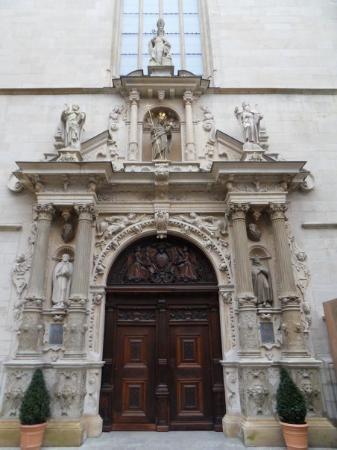Religion, an Alternative to Psychiatry?

The Notre-Dame Cathedral of Luxembourg was first founded as a church by the Jesuits in the 17th century. In 1840, the Catholic Church of Luxembourg was erected as an apostolic vicariate by the Pope. In 1870, Luxembourg became a bishopric and the church was officially designated to become a cathedral.
The first person who exercised the function of apostolic vicar was Jean-Théodore Laurent, who served as an exorcist priest.
On the 1st of May 1842, a 15-year-old German girl from Lorraine was exorcised in the Notre-Dame Church. The girl spoke several languages and insulted her relatives and the Catholic religion. She twitched, shivered and crumbled to the ground several times. The exorcist session was presided by Jean-Théodore Laurent. The clergy and the faithful prayed together and celebrated masses to chase the demons from the soul of the young girl.
This story is told in the Erzählung einer vom Bischof bewirkten Teufels-Austreibung published in 1843 and reflects the mentalities of the Church at this time.
Was this girl really possessed by demons or did she have a mental illness which was unknown at this time? Was it perhaps rather an epileptic crisis? It is difficult to answer to this question, because it is not explicitly explained in Laurent’s memoirs and this work is our only source for the event. Nevertheless, this case fits into the context of conflicts between medicine, which aimed to treat mental illness with science, and the Church, which did not want to lose its legitimacy in society and continued to rely on superstitions and popular beliefs to treat mental illness. Consequently, we can see that the Church still had an important influence in society during the 19th century, and that a lot of Luxembourgish people were attached to the Catholic religion and beliefs of this time.
